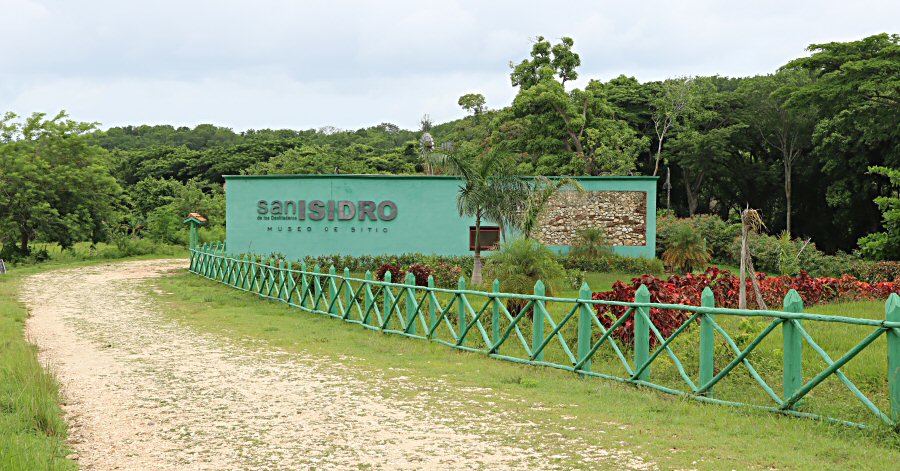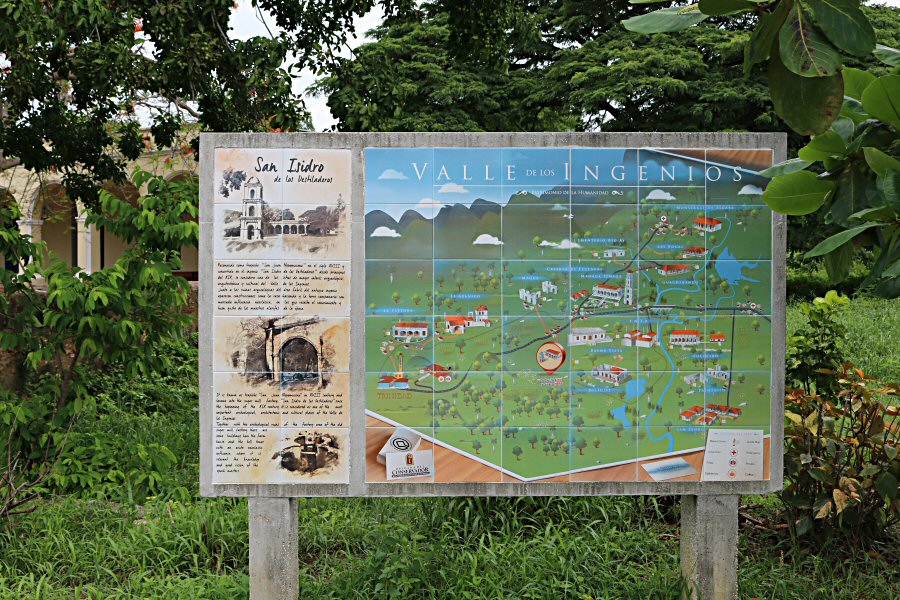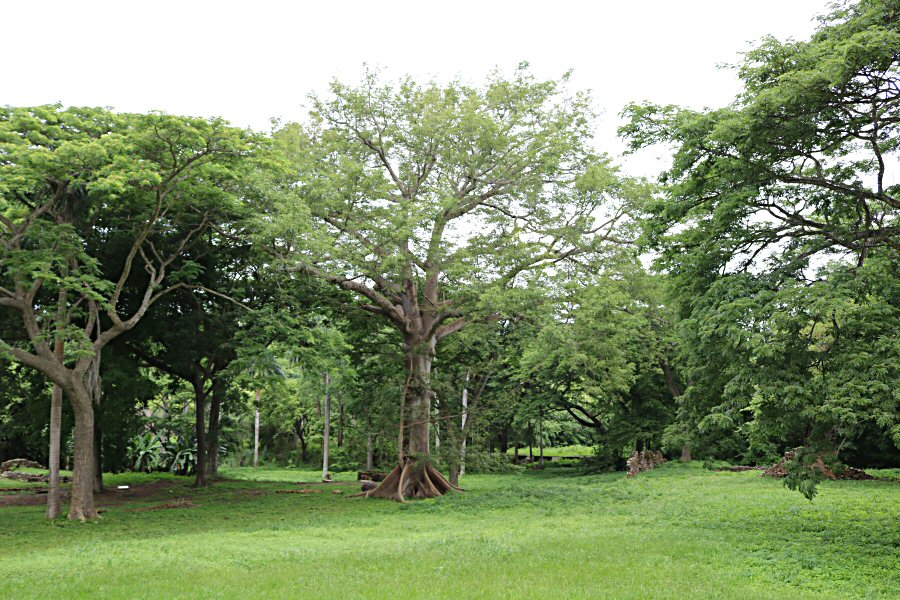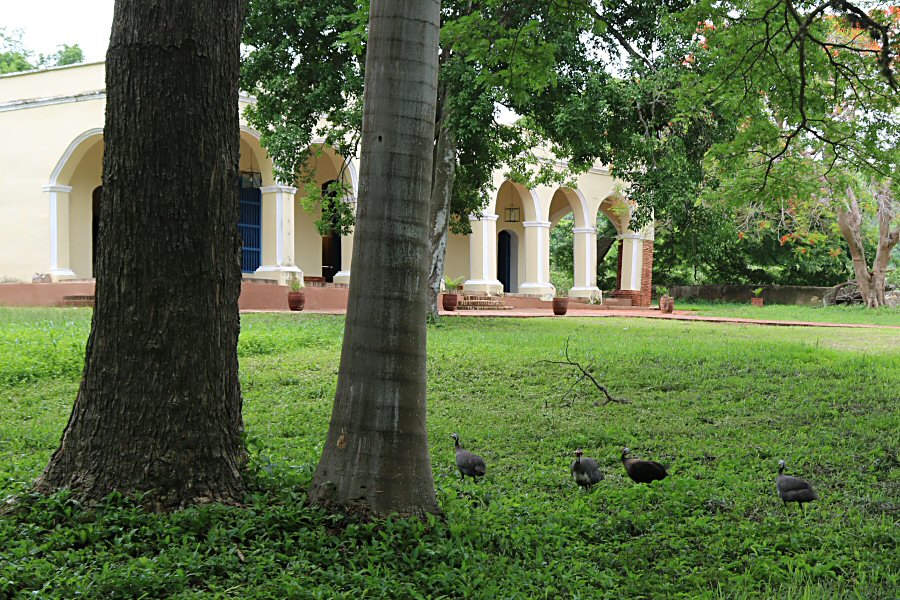Localization
The hacienda of San Isidro de los Destiladeros is about 9 km north of Trinidad, accessed through the road to Sancti Spiritus.
Opening Hours
every day 08:00 - 17:00

INGENIO
SAN ISIDRO DE LOS DESTILADEROS
San Isidro de los Destiladeros is the largest sugar mill in the Vale de los Ingenios that has survived to our days with its beautiful wedding house and the unique bell tower. Additionally, there are several remains of great importance, such as the "Jamaica train".
It was included in the list of 100 sites in danger in 1999 by the World Monument Fund that seeks and promotes financing for historic and heritage sites in danger. With the collaboration of UNESCO, the San Isidro de los Destiladeros sugar mill was renovated. It is considered one of the sites of greatest archaeological value in the valley.
History
It is estimated that this hacienda was established in Coyugi, in the district of Casilda, at the end of the 18th century. It is understood from the declaration made by Pedro Matamoros, the owner of the hacienda, that he had a dwelling house, built here, in 1838, which costed more than 600,000 pesos. The sugar mill was known as San Juan Nepomuceno at that time.
Again, from the declaration made by Isabel María González and José María Puentes' proxy, it is understood that Pedro Matamoros' assets were purchased by them at an auction in 1854. According to the record in 1854, the hacienda was built on an area of about 20,000 square meters and 100 slaves were working on it. They sold them later to Carlos Malibrán for 80,000 pesos.
In 1862, Carlos Malibrán sold the sugar mill with its 49 slaves to Salvador Zulueta. Shortly after this, the sugar mill passed to Isabel Iznaga de Cantero. In 1870, Isabel Iznaga de Cantero applied to the council and asked that the place in question was in ruins and requested to record it as paddock. In this application, the sugar mill he owned is mentioned for the first time as San Isidro de los Destiladeros. In 1893, Jaime Rubié Llorens registered the farm as paddock.

San Isidro de los Destiladeros is the largest sugar mill in the Vale de los Ingenios that has survived to our days with its beautiful wedding house and the unique bell tower. Additionally, there are several remains of great importance, such as the "Jamaica train".
It was included in the list of 100 sites in danger in 1999 by the World Monument Fund that seeks and promotes financing for historic and heritage sites in danger. With the collaboration of UNESCO, the San Isidro de los Destiladeros sugar mill was renovated. It is considered one of the sites of greatest archaeological value in the valley.
History
It is estimated that this hacienda was established in Coyugi, in the district of Casilda, at the end of the 18th century. It is understood from the declaration made by Pedro Matamoros, the owner of the hacienda, that he had a dwelling house, built here, in 1838, which costed more than 600,000 pesos. The sugar mill was known as San Juan Nepomuceno at that time.
Again, from the declaration made by Isabel María González and José María Puentes' proxy, it is understood that Pedro Matamoros' assets were purchased by them at an auction in 1854. According to the record in 1854, the hacienda was built on an area of about 20,000 square meters and 100 slaves were working on it. They sold them later to Carlos Malibrán for 80,000 pesos.
In 1862, Carlos Malibrán sold the sugar mill with its 49 slaves to Salvador Zulueta. Shortly after this, the sugar mill passed to Isabel Iznaga de Cantero. In 1870, Isabel Iznaga de Cantero applied to the council and asked that the place in question was in ruins and requested to record it as paddock. In this application, the sugar mill he owned is mentioned for the first time as San Isidro de los Destiladeros. In 1893, Jaime Rubié Llorens registered the farm as paddock.


